In Autumn of 2017 I worked on a building retrofit project with Paco Bos as part of the Integrated Design Project in our Masters programme. We explored concepts of how the retrofit of a commercial-residential building was part of the wider district redevelopment. For this reason we named the project “The Node”. These presentation slides gives a nice summary of the project but I’ll provide a quick overview here. Also, checkout our report for further details.
At district level the heating network was expanding, making the reduction of heating demand attractive to ease the transition. Mobility was also a central theme of the project as we wanted to add cyclist infrastructure (lanes and parking/lock-ups) and increase pedestrian connectivity through the building at street level.
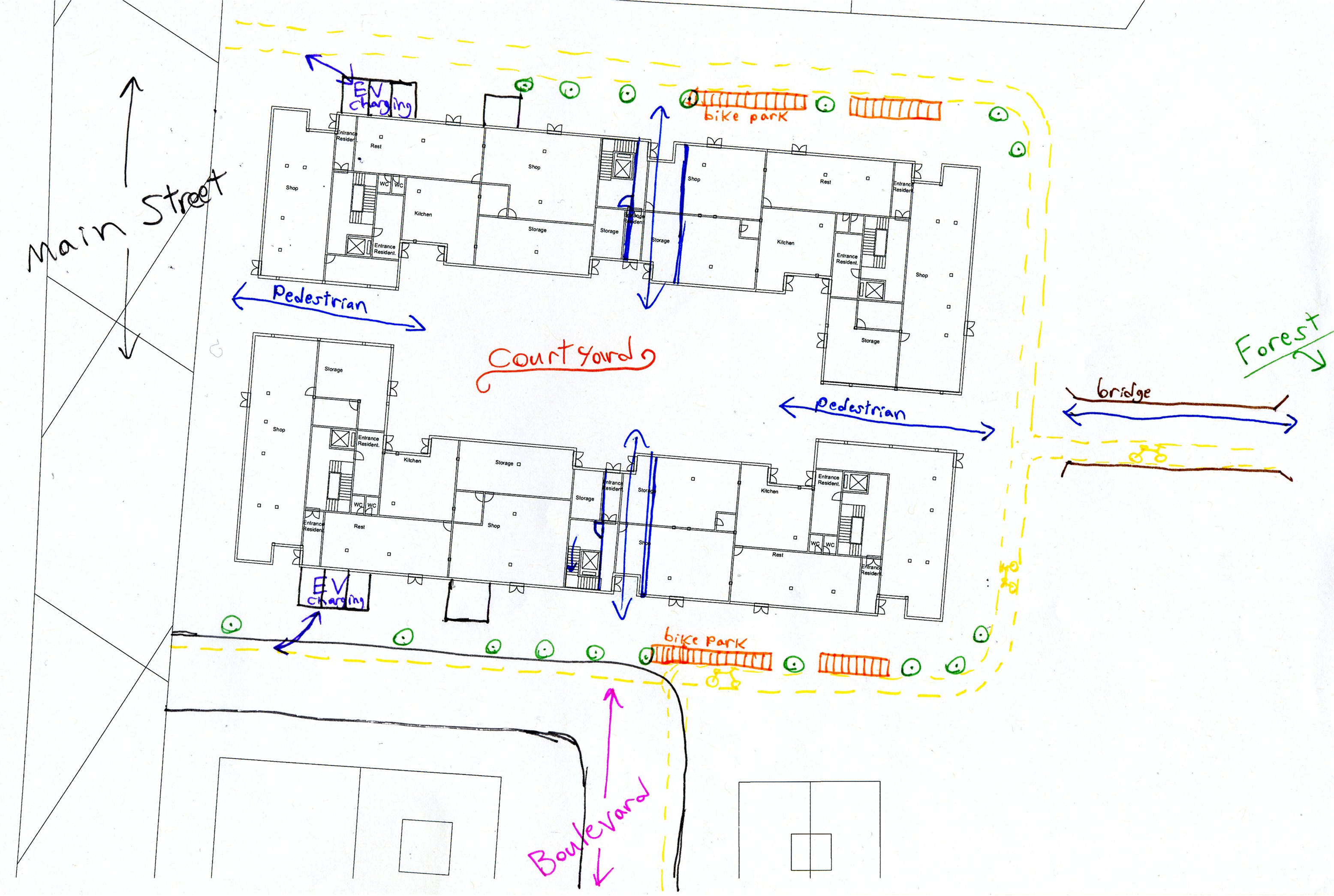
We wanted to have a positive environmental, social, and economic outcome so we proposed several measures to reduce the heating and cooling loads in the building. These energy savings were individually packaged as postive ROI investment options. We also plan a large solar photovoltaic (PV) installation on the rooftop to offset the large electricity demand from the building tenants and lighting. A rooftop garden and collective space was also planned for the roof. The collective space being underneath large pavillions that provide shade and additional area for PV panels. The pavillions do cause some shading effect on the lower level which we calculated.
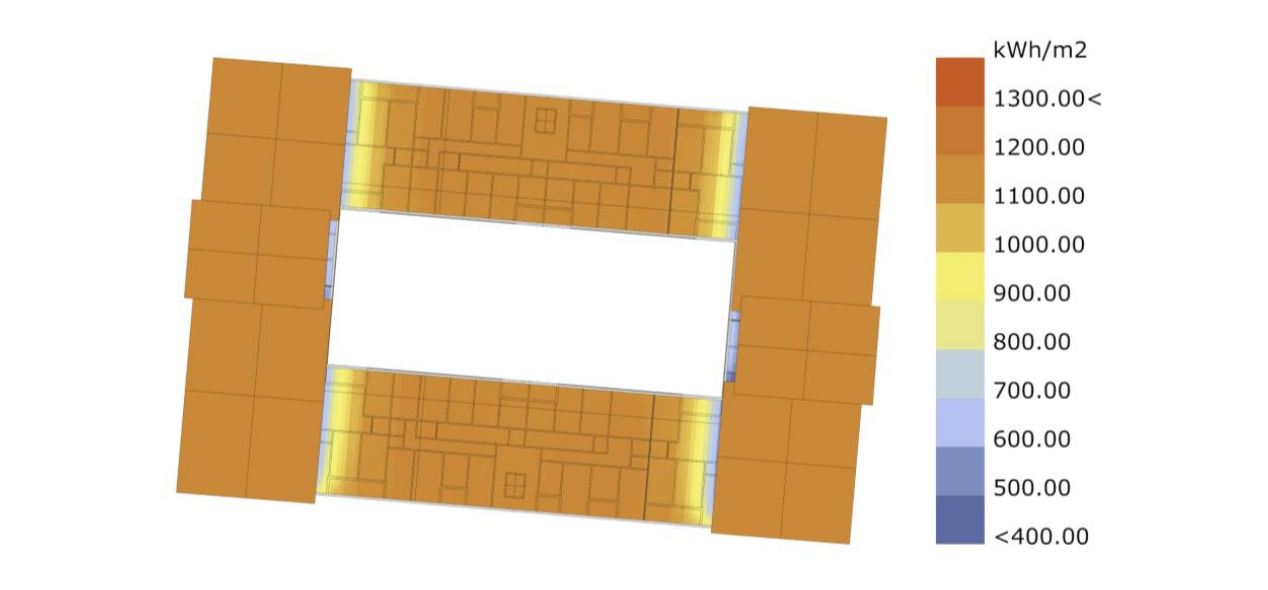
The partially shaded areas and one side of the roof lower level were proposed as garden area. We didn’t want to have the roof be exclusive to energy production and thought that this could be an interesting place for the community to gather. Underneath the pavillions was proposed as a place for a local tenant-based group to define with supplied water and electrical connections. Some improvements were planned to make this possible, for example acoustic insulation in the roof. Additionally, the building air exhausts that penetrated the roof were extended with built-in seating around them.
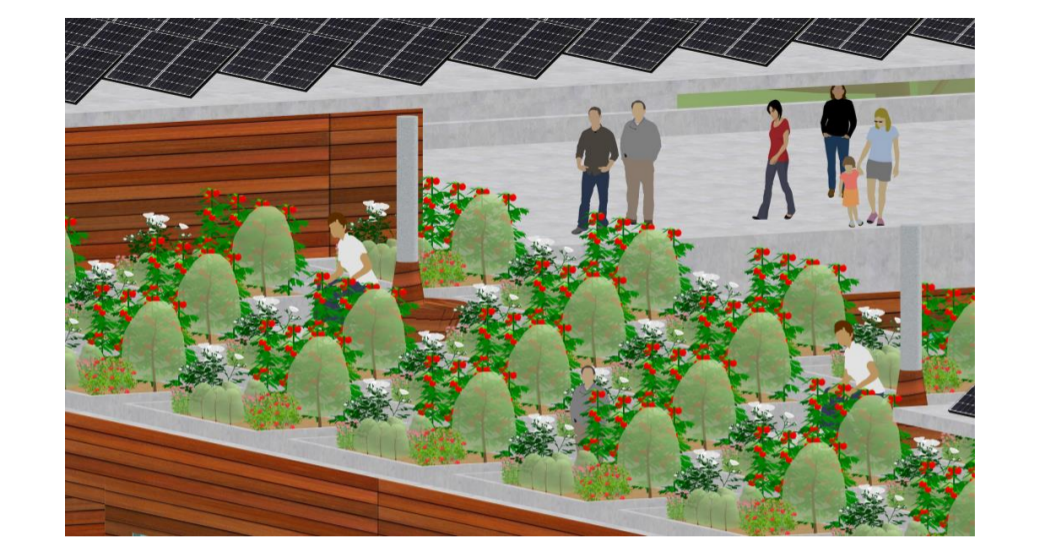
The building envelope improvements were targeted to reduce the heating load and provide a more unique aesthetic. We chose wood as the facade material because of its ubiquity in Switzerland and low environmental impact. This could be applied as a new set of layers including insulation, over the existing plaster facade.
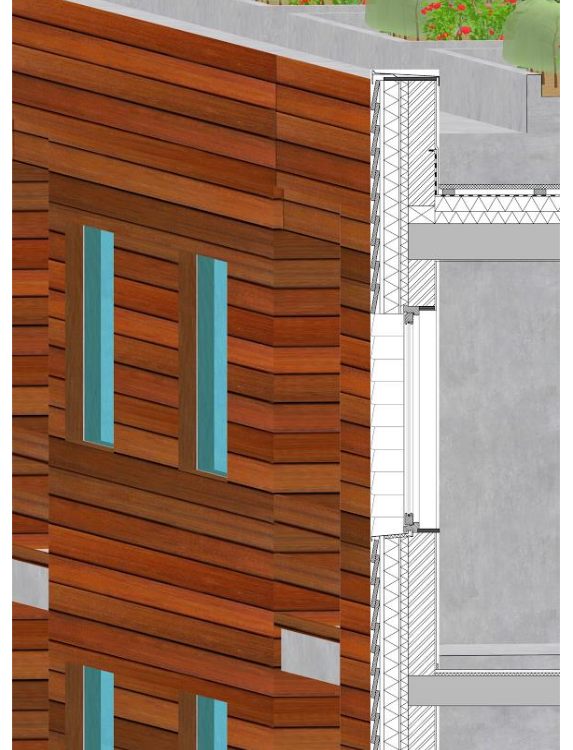
With all the improvements planned the net energy demand was reduced by an estimated 38%, from 141 W/m2-a to 88 W/m2-a. However the primary energy is reduced by a larger 62%, and carbon intensity is reduced by 38%. Interestingly DHW and room electricity accounted for 36.7% and 30.4% of post-retrofit demand respectively. It’s clear that focusing in the actual usage by occupants is key to better energy performance.
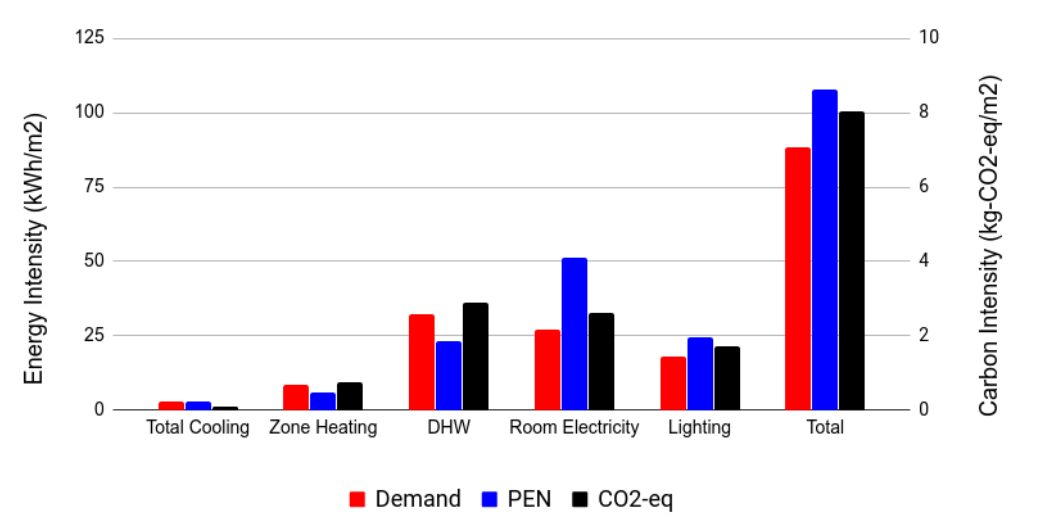
If you are interested in the details of the project the presentation slides and report are available in the links.
